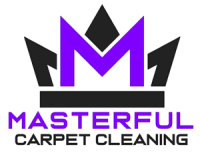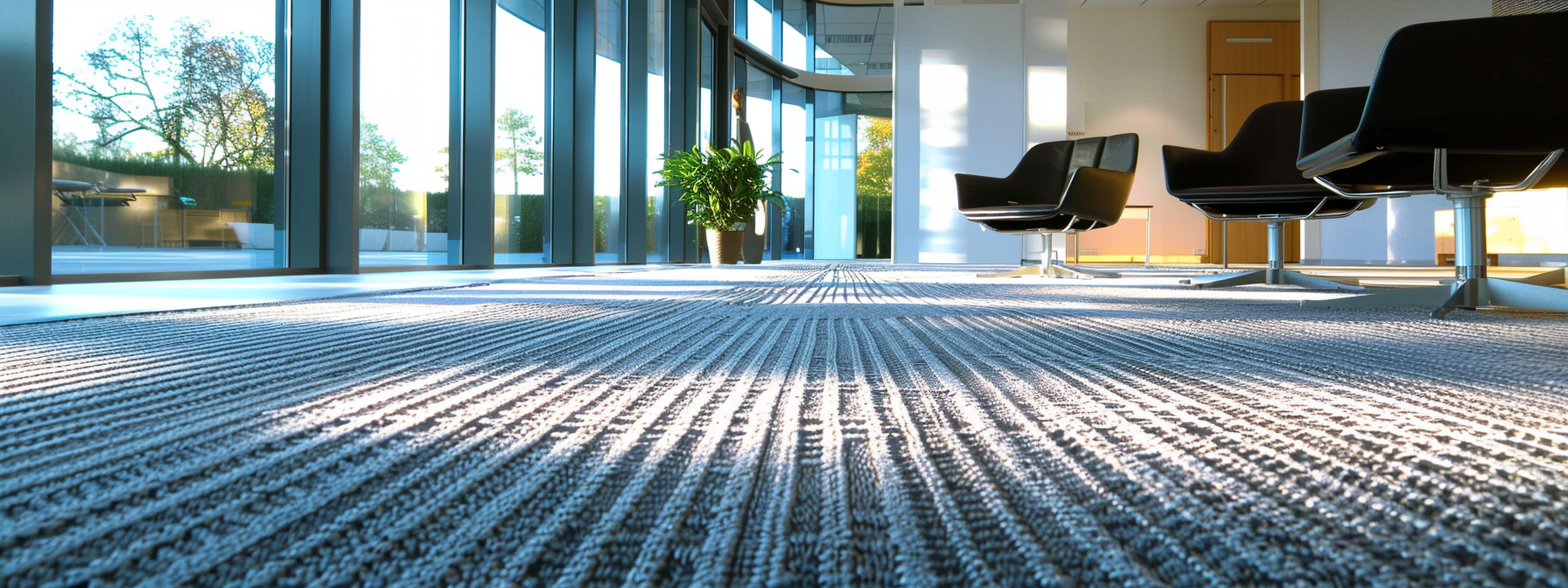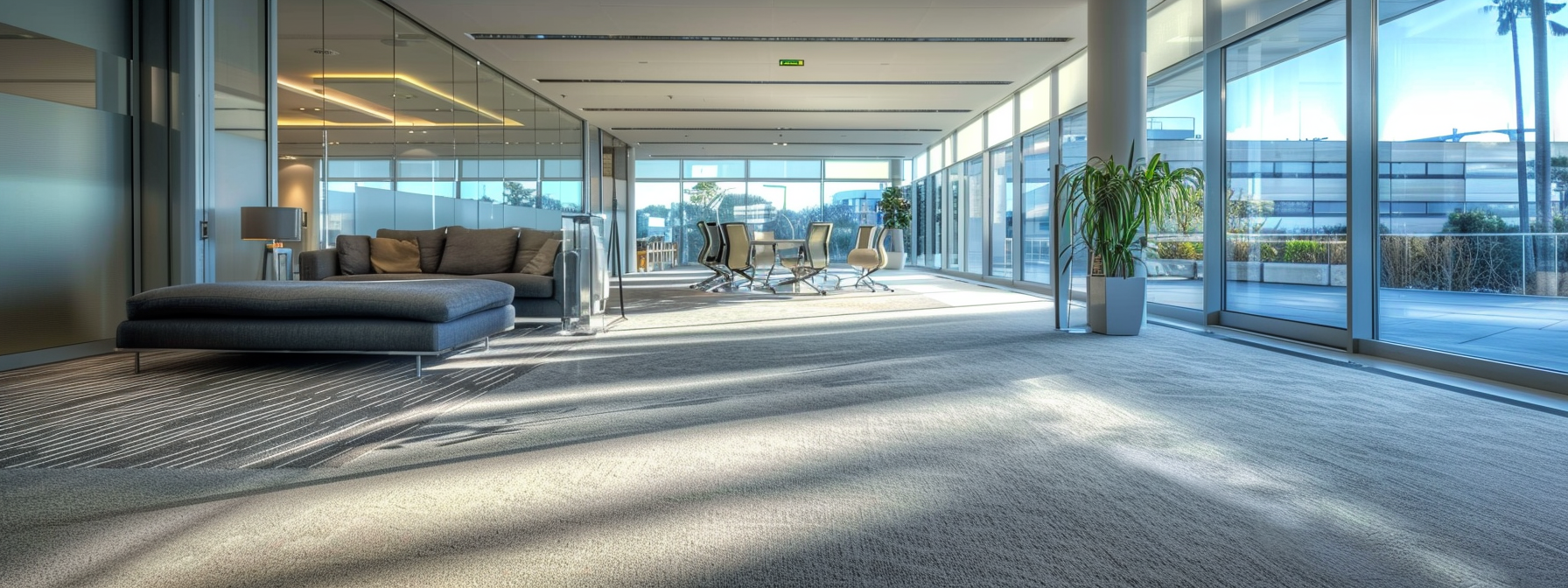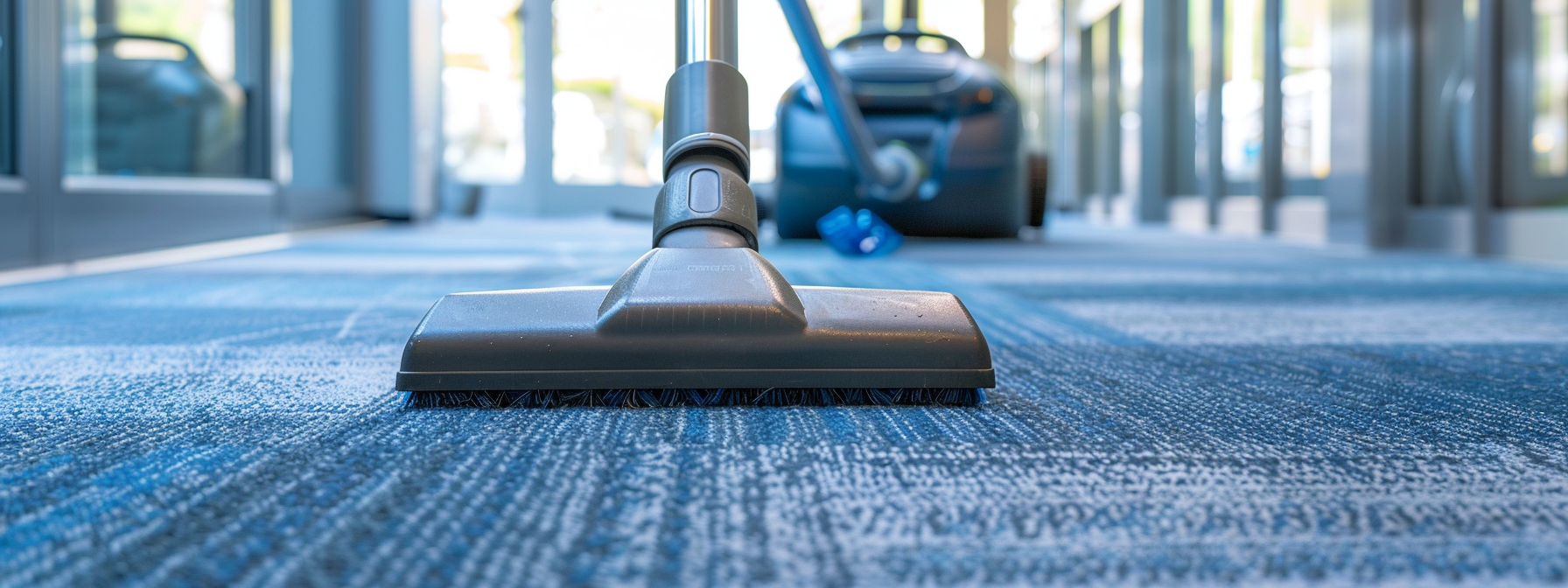Long-Term Repair Solutions for Carpet Burns

Carpet burns are a common yet disruptive issue, affecting both the appearance and longevity of your carpet.
These unsightly blemishes can arise from various incidents, such as accidental drops of hot items or friction-induced marks. Recognizing the importance of effective repair solutions is key, not only for aesthetic reasons but also to maintain the carpet’s integrity over time.
Carpet burns typically occur from mishaps involving hot objects like irons or cigarettes, or through friction, highlighting the need for careful handling and prompt repair actions.
Types of Carpet Burns
- Minor Burns: Surface-level damage often caused by brief contact with heat sources like cigarettes. These burns usually affect only the carpet’s top fibers.
- Medium Burns: More severe than minor burns, resulting from prolonged exposure to heat. They may penetrate deeper into the carpet, necessitating more complex repair methods.
- Large Burns: The most extensive damage, potentially reaching the carpet’s base. Large burns often result from significant incidents, such as embers from a fireplace.
Assessing the Damage
Proper assessment is the first step in repair. Determine the burn’s size and depth to choose the appropriate repair technique. This decision-making process is important for a successful restoration, ensuring that the chosen method aligns with the burn’s severity.
Tools and Materials Needed
A comprehensive toolkit is essential for tackling carpet burns effectively:
- Cutting Tools: Scissors or a carpet knife are needed to remove the damaged fibers carefully.
- Adhesive Solutions: Carpet adhesive or a hot glue gun will secure the replacement piece in place.
- Replacement Materials: Carpet remnants or a patch kit are important for filling the removed area. Ensure the replacement matches the original carpet’s texture and color.
- Finishing Tools: A carpet seam roller helps blend the repair seamlessly with the surrounding area.
- Cleaning Supplies: A vacuum and carpet cleaner ensure the area is clean before and after the repair, promoting a neat and consistent appearance.
These tools and materials are indispensable for executing a successful carpet burn repair, from preparation through to the finishing touches. Each plays a specific role in restoring the carpet’s appearance and functionality, demonstrating the multifaceted approach required to address different types of burns.

Step-by-Step Repair Instructions
Minor Burns Repair
To address minor burns, such as those caused by cigarette ashes, the process involves a few clear steps:
- Sanding: Use sandpaper to gently remove the burn mark.
- Vacuuming: Clear away debris with a vacuum cleaner.
- Cutting Burnt Fibers: Trim any remaining burnt fibers with scissors.
- Cleaning Solution: Apply a mixture of one part hydrogen peroxide to ten parts water. Blot the stain, starting from the outside and moving inwards.
- Drying: Spray the area with water and blot dry. Allow to air dry completely. If the mark is still visible, you might need to fill the area with new fibers.
Medium Burns Repair
For medium-sized burns, which might involve more significant damage:
- Begin by cutting away the damaged fibers.
- Clean the area using a mild detergent solution, then with clean water.
- If necessary, use tweezers to remove any stubborn burnt pieces.
- Depending on the depth, you may need to apply a carpet adhesive or carpet cement to secure new fibers or a patch in place.
Large Burns Repair
Large burns typically require replacing the damaged section with a new piece of carpet:
- Preparation: Vacuum the area to remove any loose debris.
- Cutting Out Damaged Section: Use a utility knife to carefully remove the burnt section, ensuring not to damage the padding beneath.
- Preparing Replacement Piece: Obtain a matching carpet scrap and cut it slightly larger than the removed section, ensuring the pile direction matches.
- Attaching the New Piece: Apply carpet adhesive to the padding and press the new piece firmly in place.
- Finishing Touches: Cover with paper and place a heavy book on top to aid adhesion. After a few hours, remove the book and paper, then use a wide-tooth comb to blend the fibers.
Each of these steps is designed to address the specific size and severity of the burn, ensuring a comprehensive repair process. For minor and medium burns, the focus is on removing the damaged fibers and cleaning the area, while large burns require a bit more work, including cutting and replacing sections of the carpet.
By following these guidelines, you can effectively repair burns in your carpet, restoring its appearance and extending its life.
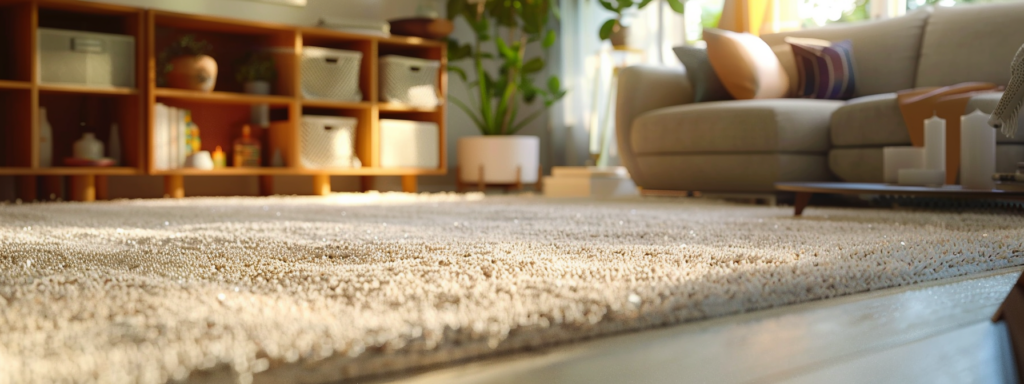
Special Techniques for Specific Burn Types
Removing Scorch Marks
To tackle scorch marks on your carpet effectively, consider the following steps refined with optimal methodology:
- Trimming: Utilize small, precise scissors to carefully trim away the charred fibers, avoiding further damage to the carpet’s structure.
- Sanding: Employ 220-grit sandpaper to lightly buff the affected area, focusing on gradual removal from the edges to the center to prevent discoloration.
- Vacuuming: After sanding, thoroughly vacuum the area to eliminate any debris and prevent it from spreading.
- Cleaning Solution Application: Mix one part hydrogen peroxide with ten parts water, and apply this solution to the scorch mark using a soft cloth, dabbing gently from the outer edges inward. Rinse with water and allow the area to dry completely.
Dealing with Soot and Residue
For minor burn marks and residual soot, follow these specialized steps:
- Sticky Tape: Use duct tape wrapped around your hand, sticky side out, to pat down the affected area, lifting away soot and burnt material effectively.
- Detailed Vacuuming: Employ the hose attachment of your vacuum cleaner to remove any lingering particles, utilizing a meticulous criss-cross motion for comprehensive cleaning.
- Detergent Cleaning: Create a mild cleaning solution with hot water and dish detergent. Apply it with a clean rag in small, circular motions, starting from the outer area of the mark moving inward. Thoroughly rinse and dry the area afterward.
- Hydrogen Peroxide Solution: For stubborn soot or scorch marks, a diluted hydrogen peroxide solution (as described above) can be reapplied, ensuring a gentle blotting application.
- Vinegar Solution: Alternatively, mix equal parts of white vinegar and warm water in a spray bottle. Apply this mixture directly to the soot stain and gently scrub with a sponge, ensuring not to spread the stain. Dry the area thoroughly with a soft cloth.
These specialized techniques provide a comprehensive approach to removing scorch marks and soot residue from carpets, employing a blend of mechanical and chemical cleaning methods to restore your carpet’s appearance while ensuring its integrity.
Preventative Measures
To avoid future carpet burns, particularly from heat sources and during regular carpet maintenance, consider the following listicle of preventative measures:
- Use Ironing Boards: Always iron on ironing boards or flat surfaces to prevent accidental contact with the carpet.
- Secure Iron Cords: Keep iron cords safely tucked away to prevent tripping or knocking the iron over.
- Monitor Heat Sources: Be vigilant around open flames, hot appliances, and during activities that could lead to sparks or heat exposure to carpets.
- Regular Maintenance: Clean and vacuum your carpets regularly to maintain their condition and reduce flammability from accumulated dust and debris.
- Install Heat Detectors: In areas where heat sources are used frequently, consider installing heat detectors to warn of potential fire hazards.
- Educate Household Members: Teach all household members, especially children, about the dangers of heat sources near carpets.
- Check Electrical Appliances: Regularly inspect the condition of electrical appliances for any faults that might cause sparks or overheating.
When to Call a Professional
Recognizing when a burn is too severe for DIY repair is important. If the burn penetrates deeply into the carpet fibers or affects a large area, professional repair or replacement may be necessary. If after attempting repair, the damage remains highly visible or the carpet texture feels significantly altered, seeking professional services is advisable.
Professionals have the tools, techniques, and matching carpet materials to seamlessly repair or replace the damaged section of your carpet. They can also offer advice on preventing future damage and maintaining your carpet’s appearance and longevity. Investing in professional carpet repair services can ultimately save you time and ensure your carpet looks as good as new.
Taking these preventative steps and knowing when to call in a professional can help maintain your carpet’s appearance and prolong its life, saving you money and hassle in the long run.
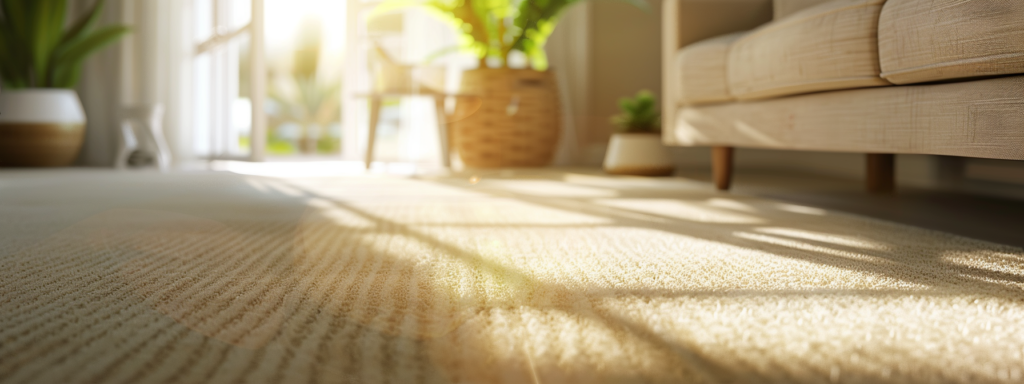
Ensuring the Longevity of Your Carpet: Addressing Burns Effectively
Addressing carpet burns promptly and with the appropriate techniques is important not only for aesthetic reasons but also to maintain the integrity and longevity of your carpet. Whether it’s a small singe from a cigarette or a larger scorch from an iron, the steps outlined in the resources offer practical solutions to repair the damage.
These methods range from simple DIY fixes for minor burns to more involved repairs for larger damages, emphasizing the importance of taking action quickly to prevent the burns from becoming more noticeable or spreading further.
I encourage readers to utilize the outlined steps for effective, long-term repairs, ensuring your carpet returns to its former glory and remains an integral part of your home’s cozy and welcoming atmosphere.
FAQs
Can carpet burns from irons be repaired using the same methods as cigarette burns?
Yes, carpet burns from irons can be repaired using methods similar to those for cigarette burns, including trimming burnt fibers, sanding, cleaning, or patching, depending on the burn’s size. Iron burns might cover a larger area and require more extensive patching.
What factors influence the cost of carpet burn repair?
The cost of carpet burn repair is influenced by the burn’s size, the repair method needed (such as cleaning, stretching, or patching), and whether spare carpet is available for patching. Professional labor costs and the need for special materials can also affect the overall repair costs.
How can homeowners prevent future carpet burns?
Homeowners can prevent future carpet burns by using protective measures like ironing boards, keeping hot items away from carpets, and ensuring that items prone to causing burns, like cigarettes, are used with care to avoid accidental drops.
Is it possible to repair carpet burns without leaving any visible signs?
Yes, it is possible to repair carpet burns without leaving visible signs, especially if the burn is small and the repair is done meticulously using matching fibers or patches. Techniques such as careful trimming, precise patching, and thorough blending with the surrounding carpet can make the repair area virtually undetectable.
Can DIY carpet burn repair methods compromise the carpet’s warranty?
DIY carpet burn repair methods can compromise the carpet’s warranty if the repairs are not conducted according to the manufacturer’s guidelines. It’s advisable to check the warranty terms before undertaking DIY repairs and consider professional services for complex damages.
How do repair costs for carpet burns compare to the costs of carpet replacement?
Repair costs for carpet burns are generally lower than the costs of carpet replacement, especially for minor to medium burns that can be addressed with patching or cleaning. Extensive damage covering large areas might narrow the cost gap, making replacement a consideration.
Why is it important to address carpet burns quickly?
It’s important to address carpet burns quickly to prevent the damage from worsening or becoming permanent. Prompt repair can restore the carpet’s appearance and functionality, avoiding the need for more extensive and costly repairs or replacements in the future.
By addressing carpet burns with the correct approach and materials, you can extend the life of your carpet and avoid the higher costs associated with replacing damaged sections. For extensive damage or for peace of mind, consulting a professional carpet repair service is advisable.
Author
-

As the Co-Owner of Masterful, Randy has been providing quality cleaning services to the Salem and Portland areas of Oregon for many years. He has built a reputation for excellence in the industry. His team take prides in using the latest cleaning techniques and technologies to deliver exceptional results every time.
View all posts
